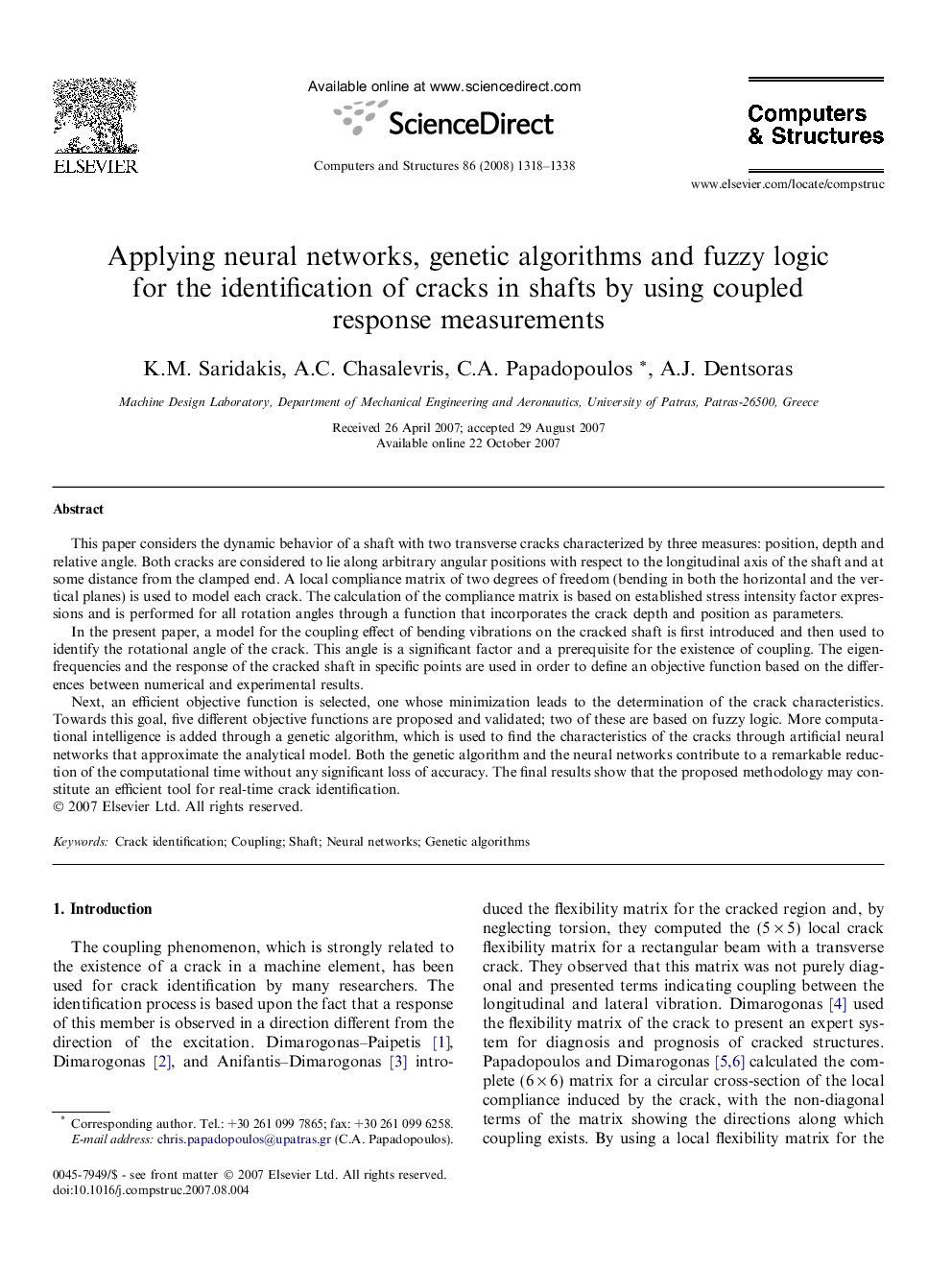| کد مقاله | کد نشریه | سال انتشار | مقاله انگلیسی | نسخه تمام متن |
|---|---|---|---|---|
| 511319 | 865836 | 2008 | 21 صفحه PDF | دانلود رایگان |

This paper considers the dynamic behavior of a shaft with two transverse cracks characterized by three measures: position, depth and relative angle. Both cracks are considered to lie along arbitrary angular positions with respect to the longitudinal axis of the shaft and at some distance from the clamped end. A local compliance matrix of two degrees of freedom (bending in both the horizontal and the vertical planes) is used to model each crack. The calculation of the compliance matrix is based on established stress intensity factor expressions and is performed for all rotation angles through a function that incorporates the crack depth and position as parameters.In the present paper, a model for the coupling effect of bending vibrations on the cracked shaft is first introduced and then used to identify the rotational angle of the crack. This angle is a significant factor and a prerequisite for the existence of coupling. The eigenfrequencies and the response of the cracked shaft in specific points are used in order to define an objective function based on the differences between numerical and experimental results.Next, an efficient objective function is selected, one whose minimization leads to the determination of the crack characteristics. Towards this goal, five different objective functions are proposed and validated; two of these are based on fuzzy logic. More computational intelligence is added through a genetic algorithm, which is used to find the characteristics of the cracks through artificial neural networks that approximate the analytical model. Both the genetic algorithm and the neural networks contribute to a remarkable reduction of the computational time without any significant loss of accuracy. The final results show that the proposed methodology may constitute an efficient tool for real-time crack identification.
Journal: Computers & Structures - Volume 86, Issues 11–12, June 2008, Pages 1318–1338